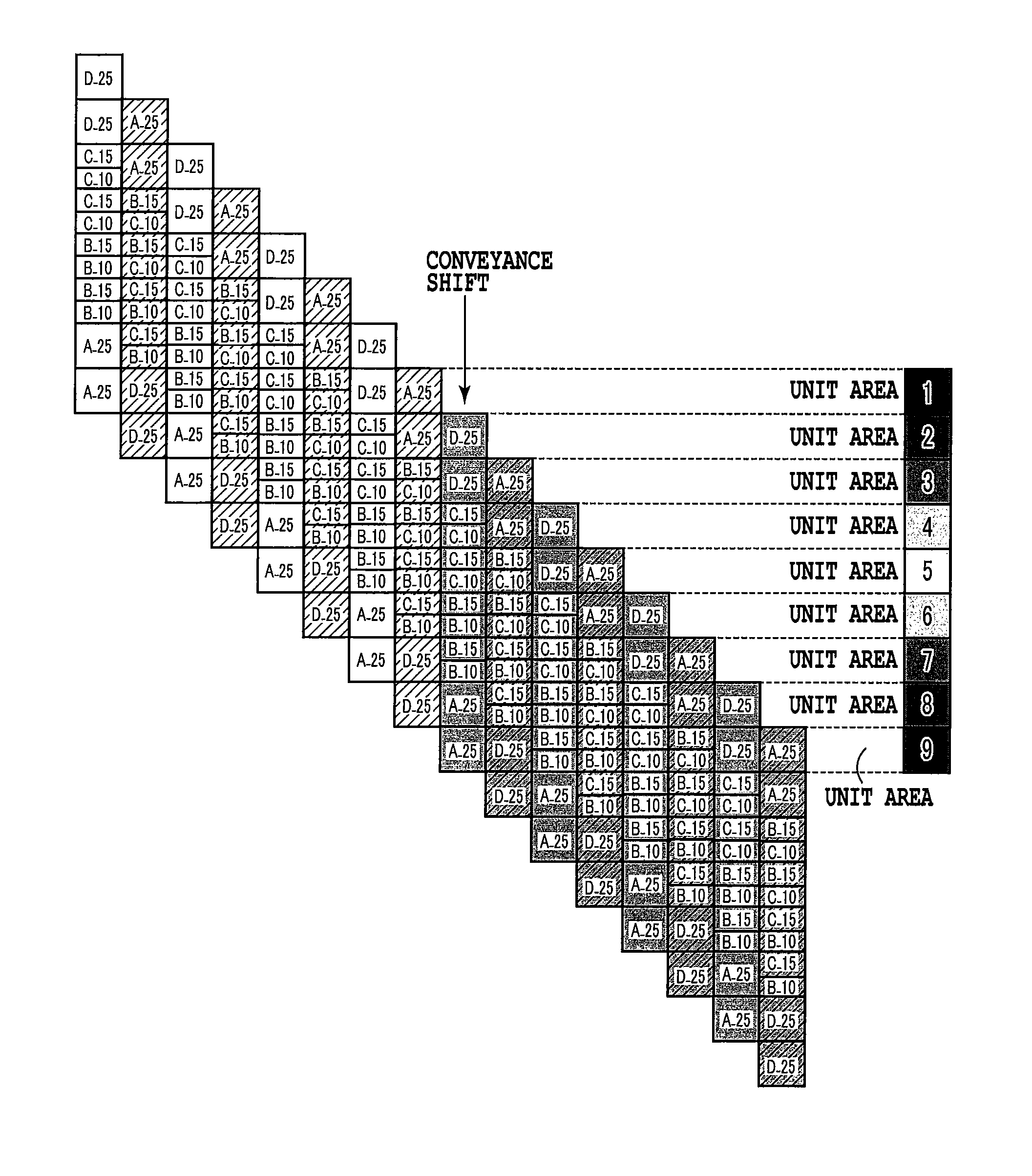Printing apparatus and printing method
a printing apparatus and printing method technology, applied in the field of printing apparatus and printing method, can solve the problems of density unevenness and stripes in images, density fluctuation, density unevenness of images,
- Summary
- Abstract
- Description
- Claims
- Application Information
AI Technical Summary
Benefits of technology
Problems solved by technology
Method used
Image
Examples
first embodiment
[0063]FIG. 1 is a diagram showing a fundamental configuration of a main mechanism part of an ink jet printing apparatus to which the present invention can be applied. A head cartridge 1 consists of a printing head 201, an ink tank part, and a connector for delivering and receiving a signal for driving the printing head, etc. (not illustrated). Moreover, the head cartridge 1 is mounted on a carriage 2 exchangeably, and the carriage 2 is provided with a connector holder (electric connection part) for transmitting a driving signal etc. to the head cartridge 1 through the connector.0025]
[0064]The carriage 2 is guided and supported in a reciprocation movable manner by a guide shaft 3 which extends along a main scanning direction and is installed in the apparatus main frame. In addition, the carriage 2 is driven by a main scanning motor 4 through a drive mechanism of a motor pulley 5, a following pulley 6, a timing belt 7, etc. and is controlled with respect to position and translation. M...
second embodiment
[0146]Also in this embodiment, the same printing apparatus as that of the first embodiment shown in FIG. 1 is used. Moreover, regarding the control configuration, the block diagram shown in FIG. 2 shall be applicable. In this embodiment, the arrangement configuration of the nozzle row of each color in the printing head 201 differs from that of the first embodiment.
[0147]FIG. 21 is a diagram for explaining the arrangement configuration of the discharge ports (nozzles) of the printing head 201 of this embodiment. In the figure, nozzle rows 211 and 218 are nozzle rows for black ink (K), and nozzle rows 212 and 217 are nozzle rows for cyan ink (C), nozzle rows 213 and 216 are nozzle rows for magenta ink (M), and nozzle rows 214 and 215 are the nozzle rows for yellow ink (Y). This embodiment has nozzle rows every two rows of which are allocated to each color, and these eight nozzle rows are arranged so as to make a symmetrical color relationship in the main scanning direction. If with su...
third embodiment
[0167]Also in this embodiment, configurations of the printing apparatus and control, a nozzle configuration of a printing head being used, a processing of the dot matrix pattern, and a storage configuration are the same as those of the second embodiment described above. However, in this embodiment, there will be given a printing method to explain a multipass printing of 16 passes that has a larger number of multipasses as a premise, the unit area where largest density reduction is anticipated with a focus given thereto, and other unit areas where the overlapped dot is separated by an appropriate quantity.
[0168]FIG. 27 is a schematic diagram for explaining the multipass printing method that is applied to this embodiment. Also here, for simplicity, explanation will be given taking masks of cyan with the nozzle rows 212 and 217, respectively, as an example. As masks of this embodiment, 16 kinds of masks A to P that each have a printable ratio of about 6.25% and are in the mutually excl...
PUM
 Login to View More
Login to View More Abstract
Description
Claims
Application Information
 Login to View More
Login to View More - R&D
- Intellectual Property
- Life Sciences
- Materials
- Tech Scout
- Unparalleled Data Quality
- Higher Quality Content
- 60% Fewer Hallucinations
Browse by: Latest US Patents, China's latest patents, Technical Efficacy Thesaurus, Application Domain, Technology Topic, Popular Technical Reports.
© 2025 PatSnap. All rights reserved.Legal|Privacy policy|Modern Slavery Act Transparency Statement|Sitemap|About US| Contact US: help@patsnap.com



